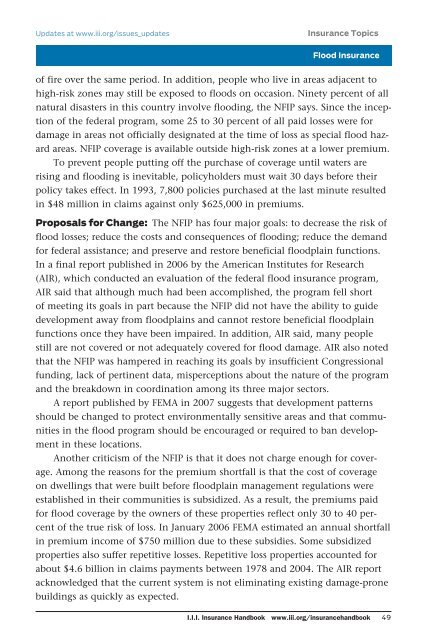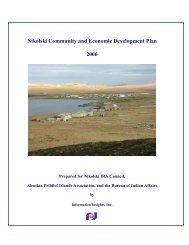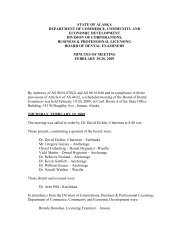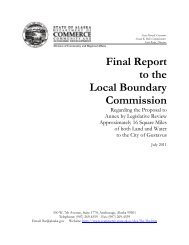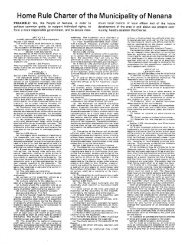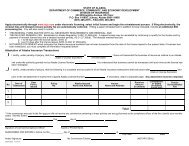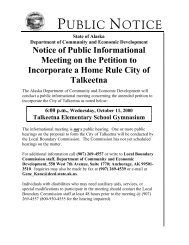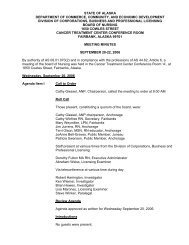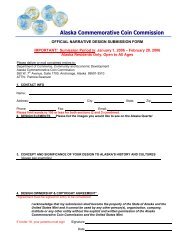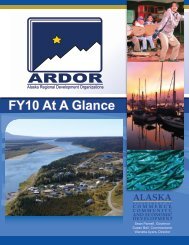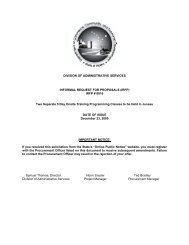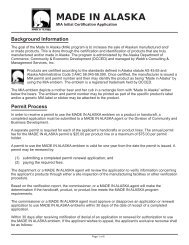Insurance Handbook - Alaska Department of Community and ...
Insurance Handbook - Alaska Department of Community and ...
Insurance Handbook - Alaska Department of Community and ...
Create successful ePaper yourself
Turn your PDF publications into a flip-book with our unique Google optimized e-Paper software.
Updates at www.iii.org/issues_updates <strong>Insurance</strong> Topics<br />
Flood Auto <strong>Insurance</strong><br />
<strong>of</strong> fire over the same period. In addition, people who live in areas adjacent to<br />
high-risk zones may still be exposed to floods on occasion. Ninety percent <strong>of</strong> all<br />
natural disasters in this country involve flooding, the NFIP says. Since the inception<br />
<strong>of</strong> the federal program, some 25 to 30 percent <strong>of</strong> all paid losses were for<br />
damage in areas not <strong>of</strong>ficially designated at the time <strong>of</strong> loss as special flood hazard<br />
areas. NFIP coverage is available outside high-risk zones at a lower premium.<br />
To prevent people putting <strong>of</strong>f the purchase <strong>of</strong> coverage until waters are<br />
rising <strong>and</strong> flooding is inevitable, policyholders must wait 30 days before their<br />
policy takes effect. In 1993, 7,800 policies purchased at the last minute resulted<br />
in $48 million in claims against only $625,000 in premiums.<br />
Proposals for Change: The NFIP has four major goals: to decrease the risk <strong>of</strong><br />
flood losses; reduce the costs <strong>and</strong> consequences <strong>of</strong> flooding; reduce the dem<strong>and</strong><br />
for federal assistance; <strong>and</strong> preserve <strong>and</strong> restore beneficial floodplain functions.<br />
In a final report published in 2006 by the American Institutes for Research<br />
(AIR), which conducted an evaluation <strong>of</strong> the federal flood insurance program,<br />
AIR said that although much had been accomplished, the program fell short<br />
<strong>of</strong> meeting its goals in part because the NFIP did not have the ability to guide<br />
development away from floodplains <strong>and</strong> cannot restore beneficial floodplain<br />
functions once they have been impaired. In addition, AIR said, many people<br />
still are not covered or not adequately covered for flood damage. AIR also noted<br />
that the NFIP was hampered in reaching its goals by insufficient Congressional<br />
funding, lack <strong>of</strong> pertinent data, misperceptions about the nature <strong>of</strong> the program<br />
<strong>and</strong> the breakdown in coordination among its three major sectors.<br />
A report published by FEMA in 2007 suggests that development patterns<br />
should be changed to protect environmentally sensitive areas <strong>and</strong> that communities<br />
in the flood program should be encouraged or required to ban development<br />
in these locations.<br />
Another criticism <strong>of</strong> the NFIP is that it does not charge enough for coverage.<br />
Among the reasons for the premium shortfall is that the cost <strong>of</strong> coverage<br />
on dwellings that were built before floodplain management regulations were<br />
established in their communities is subsidized. As a result, the premiums paid<br />
for flood coverage by the owners <strong>of</strong> these properties reflect only 30 to 40 percent<br />
<strong>of</strong> the true risk <strong>of</strong> loss. In January 2006 FEMA estimated an annual shortfall<br />
in premium income <strong>of</strong> $750 million due to these subsidies. Some subsidized<br />
properties also suffer repetitive losses. Repetitive loss properties accounted for<br />
about $4.6 billion in claims payments between 1978 <strong>and</strong> 2004. The AIR report<br />
acknowledged that the current system is not eliminating existing damage-prone<br />
buildings as quickly as expected.<br />
I.I.I. <strong>Insurance</strong> <strong>H<strong>and</strong>book</strong> www.iii.org/insuranceh<strong>and</strong>book 49


